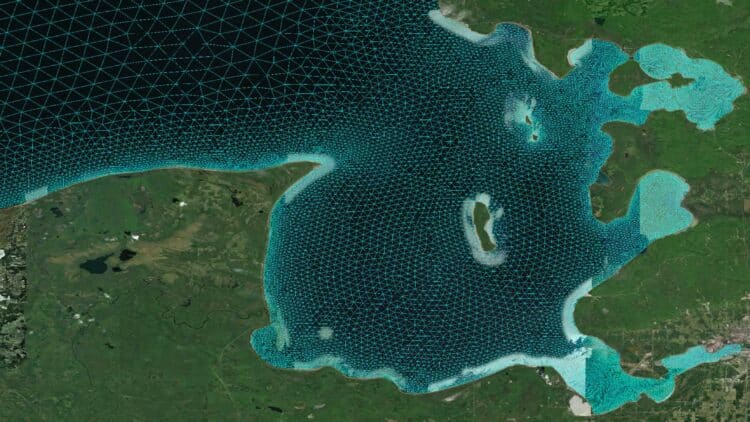Imagine walking along the beach and suddenly seeing the water disappear before your eyes. Yes, a sandy bottom stretches where there used to be waves, boats are stranded, and docks creak with the sudden change. Until, shortly after, the water returns violently, swallowing everything it had exposed, as if it had a life of its own. That’s exactly what happened in June 2025, when one of the largest freshwater lakes on the planet staged a spectacle as impressive as it was dangerous.
When a lake breathes: A powerful natural phenomenon shocked the world
A powerful storm swept through the region, triggering a chain reaction: first, an invisible atmospheric pressure wave pressed against the lake’s surface; then, strong winds from the southeast pushed large masses of water northward. Within minutes, beaches dried up, harbors became unstable, and violent currents took over narrow channels.
Experts say it even seemed as if the lake was “breathing,” largely because it was drawing in all its air, then exhaling it all at once. Well, all of this happened in Lake Superior, the largest and deepest of the North American Great Lakes. Its colossal size typically makes it less susceptible to extreme fluctuations, which makes this episode even more extraordinary. Some consequences were already felt, such as:
- Small boats were pushed against the docks.
- Cargo ships delayed departures to avoid running aground.
- Coastal cities in Michigan, Minnesota, Wisconsin, and Ontario captured stunning images of the waters receding and returning.
In fact, the sudden withdrawal of the water attracted curious onlookers, who walked on the exposed riverbed, a risky choice, as meteorologists warned, one of them being Ketzel Levens, a meteorologist with the NWS in Duluth, who says:
“We don’t necessarily recommend walking out there, because the water is going to come back.”
Three forces collide: Rare storm or a glimpse of nature’s hidden power?
Trying to better understand what really happened, scientists confirmed that the episode was not the result of a single process, but rather the rare combination of three powerful forces:
- Meteotsunami: caused by the rapid displacement of a low-pressure system, aligned with the wave it generated.
- Storm surge: winds of up to 40 mph pushed the water toward the northern shores.
- Seiche: after the storm, the displaced water began to oscillate back and forth, like a giant bathtub, for hours and then days.
It was so impressive (just like when the Great Lakes hide a new kind of life) that we need to highlight some of the resulting figures. At the Point Iroquois, Michigan, water levels rose 45.4 inches in just 150 minutes, becoming the highest recorded in 30 years.
“The first push is always the biggest, and the magnitude kind of dampens from there,” said Levens.
Can science keep up with a restless lake?
Current models used to forecast conditions in the Great Lakes operate on hourly timescales, with insufficient resolution to capture changes that occur in a matter of minutes. Several factors make this phenomenon so difficult to predict:
- Limited data: There are only a few water level sensors scattered around the lake.
- Disconnected from the storm: Meteotsunamis often occur after the squall line has passed.
- Lack of warning category: There is no specific warning for meteotsunamis or seiches, which are included in generic coastal flood warnings.
In Lake Erie, known for its shallowness, seiches are common and routine. In Lake Superior, which is so vast and deep, events of this scale are extremely rare. The last comparable event was in 2014, until this one in 2025. Events like this force scientists to rethink how we monitor, model, and prepare for phenomena that unfold faster than we can keep up. Which reminds us of those radioactive lakes in the U.S. where strange lifeforms have been emerging.


